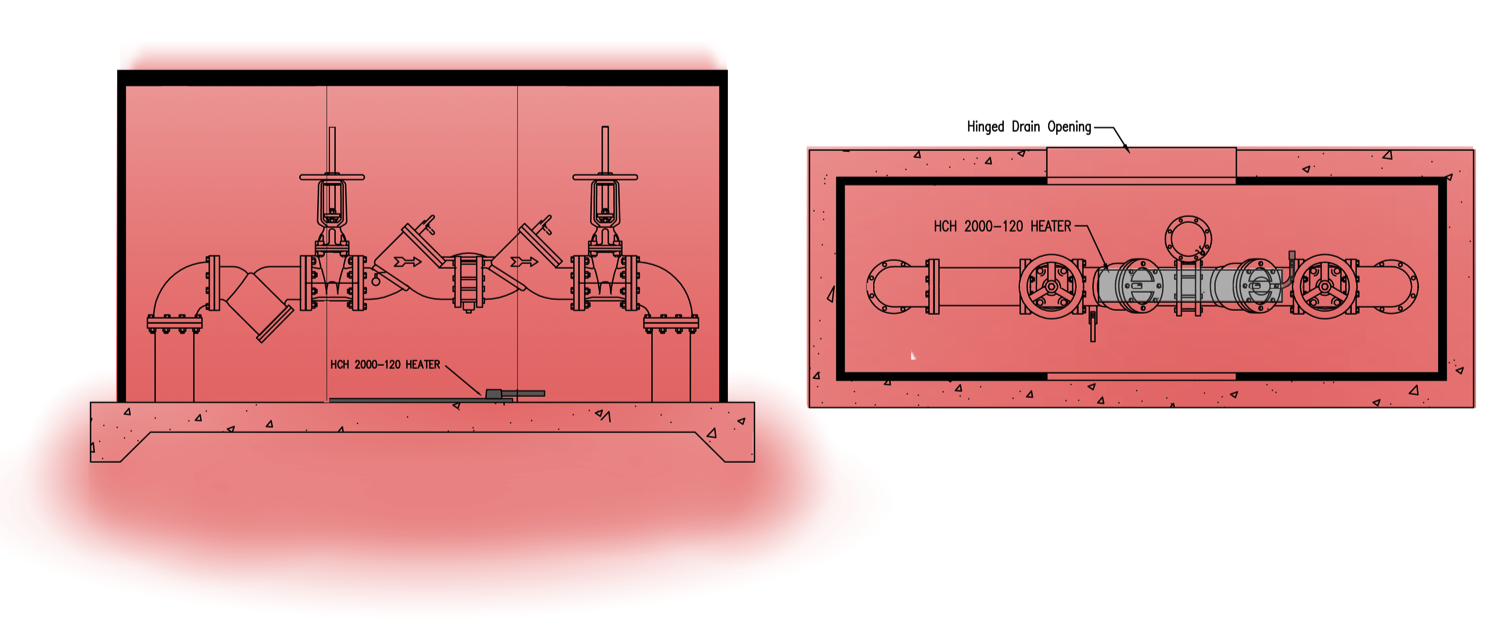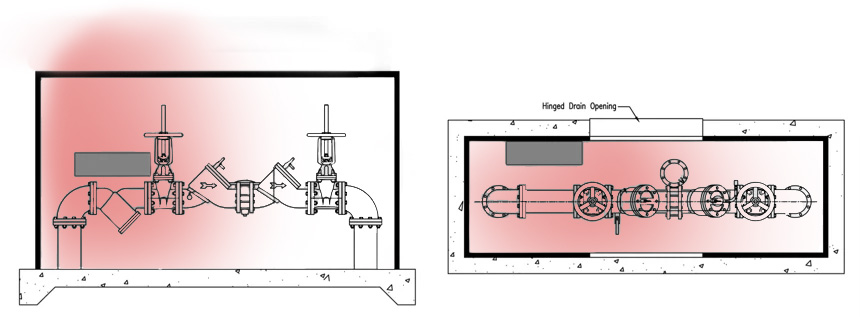In 2006, the American Society of Sanitary Engineering updated their 1060 standard to state that Class I enclosures "[s]hall be heated to maintain an interior temperature of 40°[F] with an outside temperature as low as -30°[F]. Heater source shall be listed by an independent product safety listing organization as ‘suitable for wet and damp environments.’"
You may be surprised to find that the majority of enclosure manufacturers that advertise ASSE 1060 compliance do not provide a heat source, especially one that works with enclosure installations that satisfy ASSE’s stringent requirements.
The Importance of ASSE Certification
ASSE accreditation is not something to be taken lightly. For over 110 years, ASSE has advocated for consistent practices in plumbing manufacturing and installation, and its certification and rating system is the gold standard in the industry.
Once a product is approved and certified, that’s really only the beginning. According to ASSE, the production facility must be reviewed and renewed annually, and an approved product is subject to renewal every five years. The ongoing commitment to excellence and product integrity is something we at Safe-T-Cover take very seriously, and it’s reflected in every facet of our business.
The Importance of Meeting the Class I Standard
Beyond meeting the rigorous requirements of ASSE for certification and approval, attaining its demanding standards for Class I designation has real world implications, as well.
A few years ago, the North Carolina state government needed to retrofit 55 double-check assemblies that were previously in underground vaults to above-ground reduced pressure zone backflow preventers in enclosures. They knew they needed more robust freeze protection and put together a team to do in-depth research of all available enclosure manufacturers with heaters that satisfy the ASSE 1060 Class I requirements. The state chose Safe-T-Cover's enclosures with our patented slab-mounted heaters for the project, providing best-in-industry freeze protection for the equipment that protects the state’s water supply.
Not All Options Meet the Mark
Not every option on the market arrives at the standards ASSE insists upon for its 1060 ratings.
There are some products on the market that refer to themselves as radiant heat solutions, but there are no readily available spec sheets or information detailing their design or actual capabilities. As such, they cannot be rated for or compared to any standard.
The next option is cable-wrap or tape: these only provide a limited heat capability of five watts per foot, only effective for pipes at a maximum two-inch diameter. It remains a popular method for these smaller solutions, and we do sell a Chromalox heater cable for this particular application.
Finally, there are Class I standard-meeting Safe-T-Cover sealed floor heaters. These provide heat to internal equipment as well as riser pipes beneath the slab. Their unique, rugged designs have proven reliable for backflow preventer protection in the most severe environments for years.

In fact, in side-by-side tests conducted at Tennessee Technological University in 1997, the floor-based heater allowed for as much as 32% fewer thermostat on-off cycles on cold weather days than its wall-mounted counterparts.
What Heaters Do Not Meet ASSE 1060 Class I Requirements?
The majority of fiberglass enclosure and aluminum shelter manufacturers use wall-mounted heaters. Because there must be room for a door, wall heaters can only be mounted to one side. They must also be mounted a minimum of 12" off the slab because they aren’t sealed and are therefore unsuitable for wet or damp conditions.
Since warm air rises, these heaters' warmth channel through the top of an enclosure long before uniform temperature is ever achieved. In addition to being noncompliant with the Class I standard, they are also simply unable to deliver the superior freeze protection provided by a slab-mounted heater.

Use an ASSE 1060 Class I Enclosure-Heater Combination
If your municipality gets frost or snow, you want to be certain your backflow enclosure meets ASSE 1060 Class I standards and contains a heater that also satisfies these requirements. Anywhere that gets below 32°F should be protected in this fashion so the water supply never runs the risk of being contaminated or interrupted as a result of backflow freezing and failure.
Make sure you’re meeting standards in every way: with local building codes and ordinances, with superior protection for your property, for our most sensitive natural resource, and protecting the equipment itself with ASSE 1060 Class I standard-meeting enclosures and slab-mounted heaters.
Take a look at the options on our heaters page or contact a design expert today to discuss your next project.




